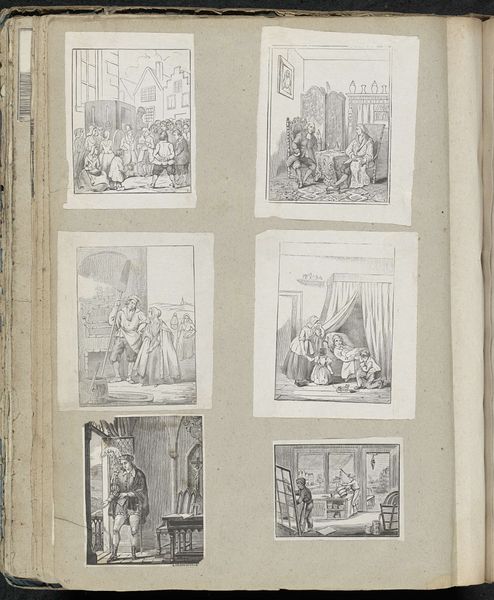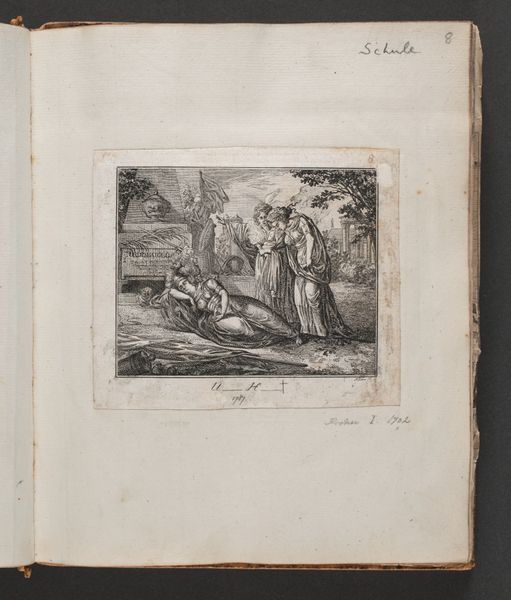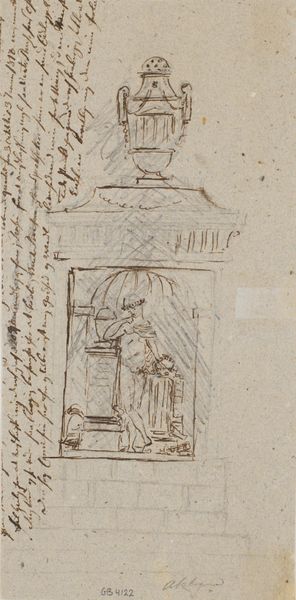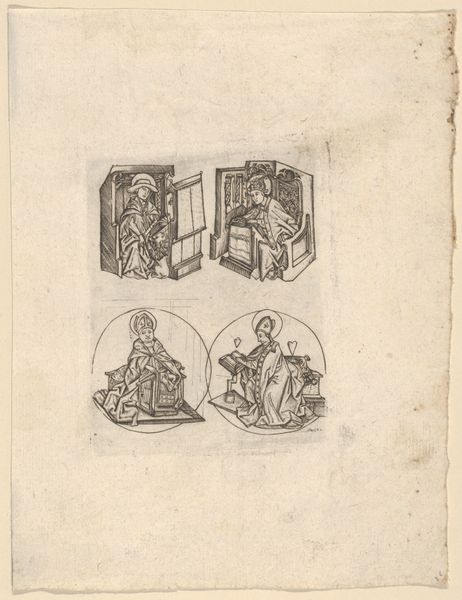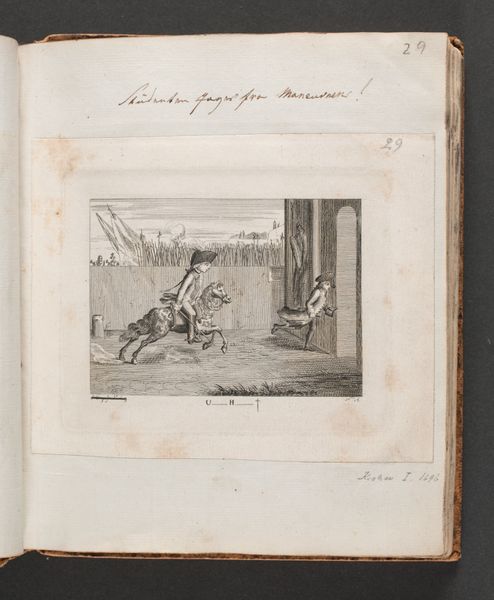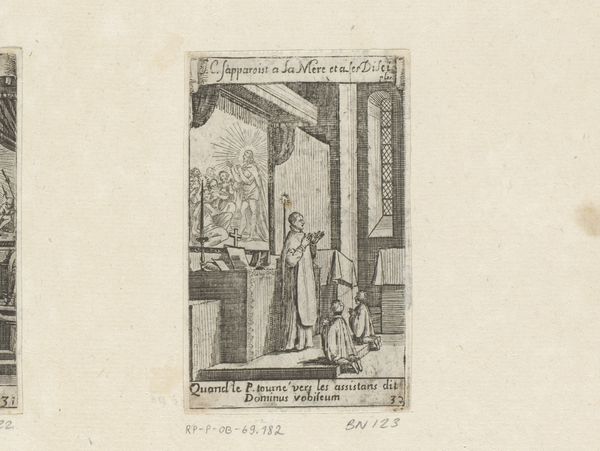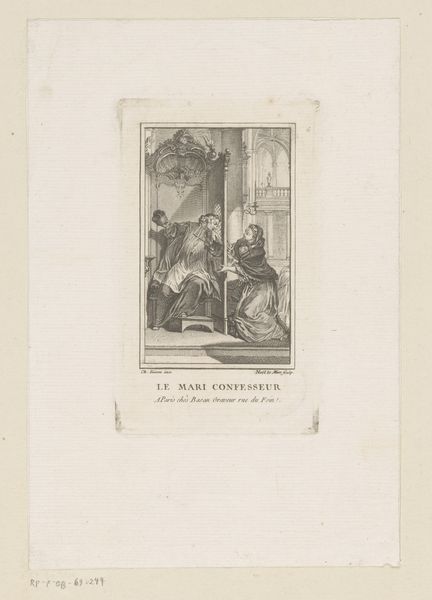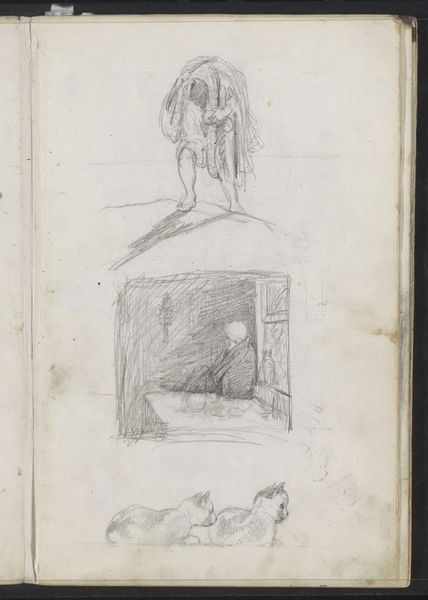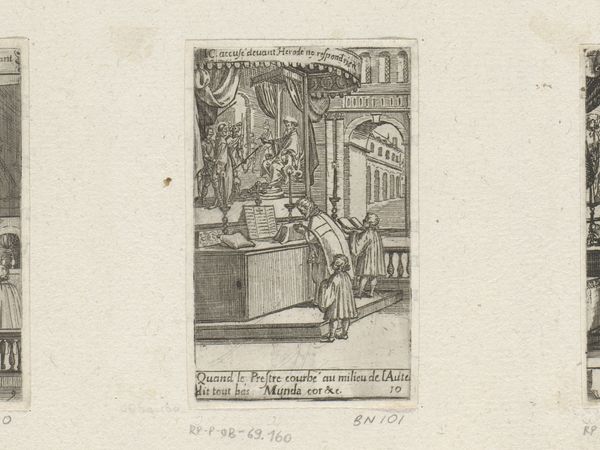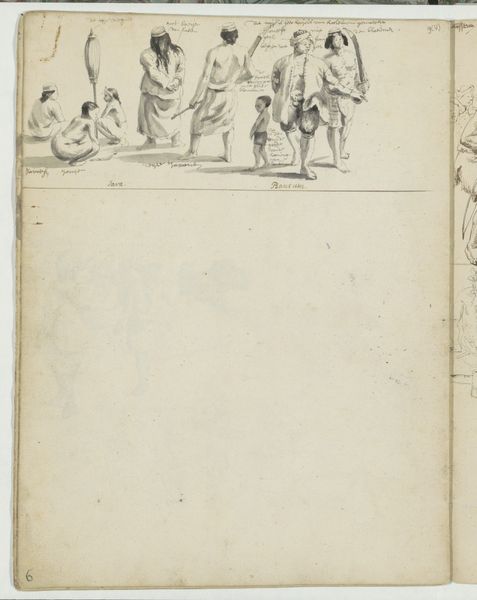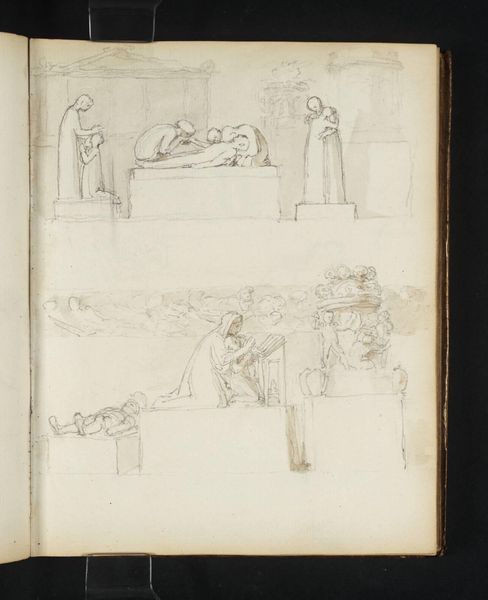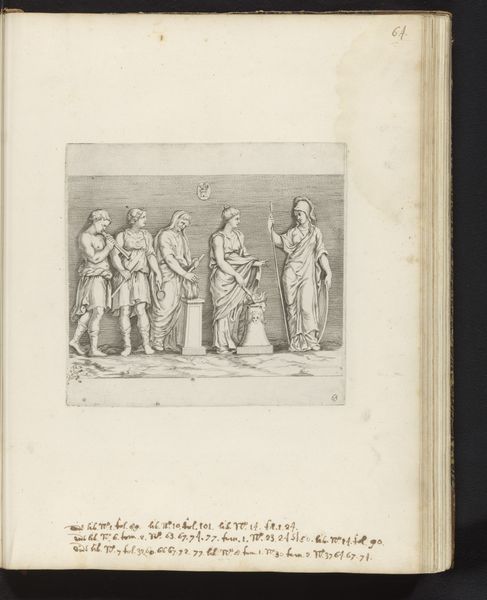
drawing, paper, ink, pen
#
drawing
#
narrative-art
#
baroque
#
paper
#
ink
#
pen-ink sketch
#
pen
#
genre-painting
#
watercolor
Dimensions: height 292 mm, width 185 mm, height 90 mm, width 67 mm
Copyright: Rijks Museum: Open Domain
Curator: The initial impression this artwork makes is one of sorrow, a silent, almost private moment of parting rendered with an economy of line. Editor: Indeed. The piece before us, "Two Sketches of the Dismissal of Hagar," was rendered by Jacob van Dorsten sometime after 1650. It's pen and brown ink on paper. Dorsten captured the biblical scene in two separate studies on a single sheet. Curator: Biblical narratives always strike me as powerfully situated within very specific social hierarchies and power dynamics. This piece is no exception, touching on themes of displacement and forced departure within the context of patriarchal structures. Hagar's story, that of a woman being expelled along with her son, resonates with so many contemporary struggles of women of color today. Editor: From an iconographic standpoint, the image vibrates with ancient echoes. Notice the stooped figure of Abraham, his posture suggestive of regret, a father’s conflict. The smaller figure of Ishmael represents innocence cast out. Hagar, of course, embodies the maternal anguish prevalent throughout artistic history. It connects directly to artistic representations of suffering. Curator: The rapid, almost frantic lines give a sense of the urgency and distress surrounding the scene. It is impossible to miss that feeling. In contrast to that energy, we can observe how Hagar is situated in relation to other individuals. Note the emotional distancing. It all points to how social marginalization works on an interpersonal level, in addition to within legal frameworks. Editor: And beyond that, consider the formal composition. The two sketches are simple, direct. In each version of the story the composition directs us to consider what is gained, but also lost by each of the parties involved. Hagar, though banished, walks away with her son; Abraham remains in his home but loses a part of his family. Curator: Exactly, and understanding the nuances in this scene – how displacement and abandonment echo throughout time—allows us to grapple with enduring social inequities, making this sketch deeply relevant, despite the temporal gap between its creation and our present. Editor: Absolutely. There’s a timelessness in these forms and symbols; a thread that weaves its way through art history and cultural memory connecting our ancestors with the human dramas we experience today.
Comments
No comments
Be the first to comment and join the conversation on the ultimate creative platform.
